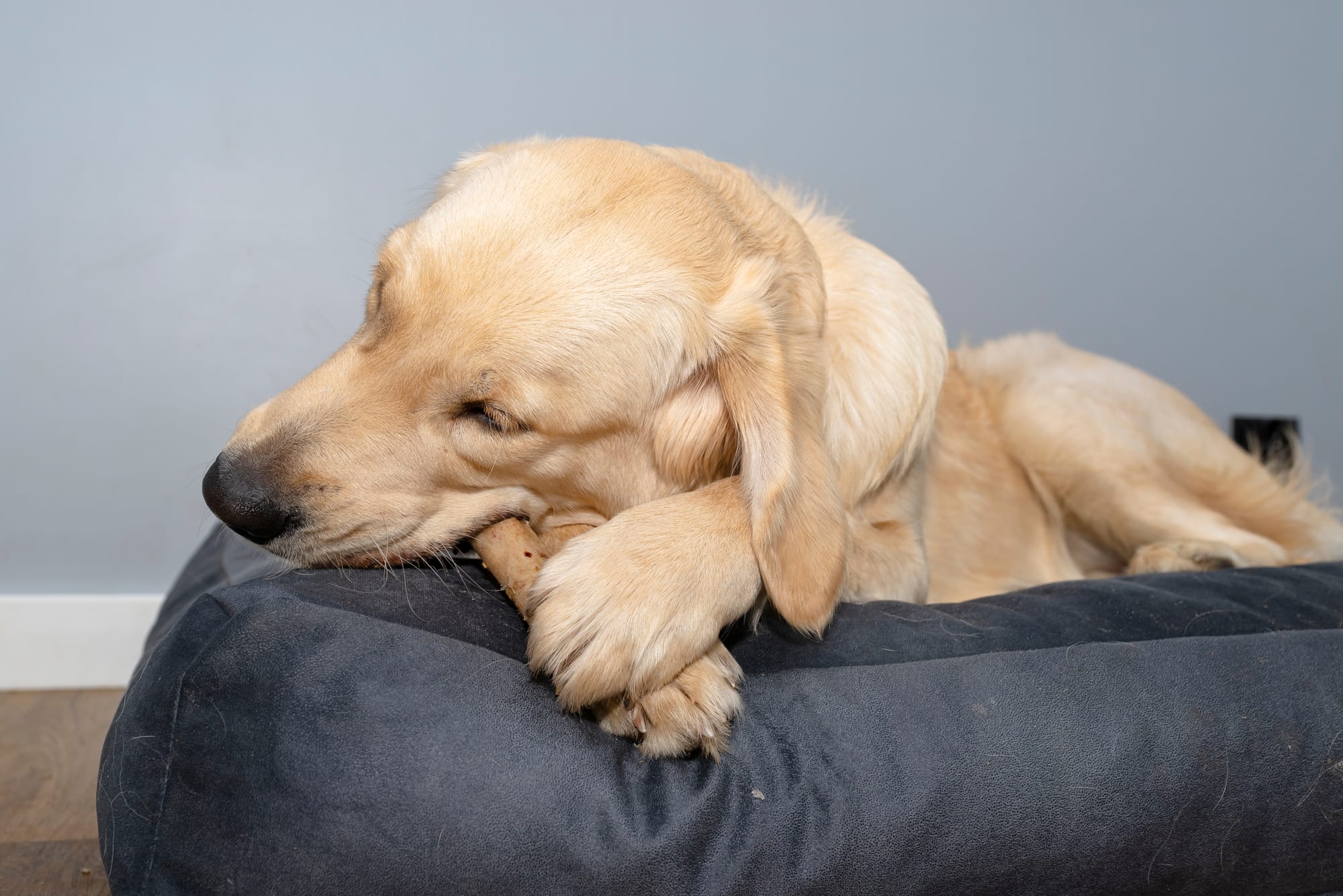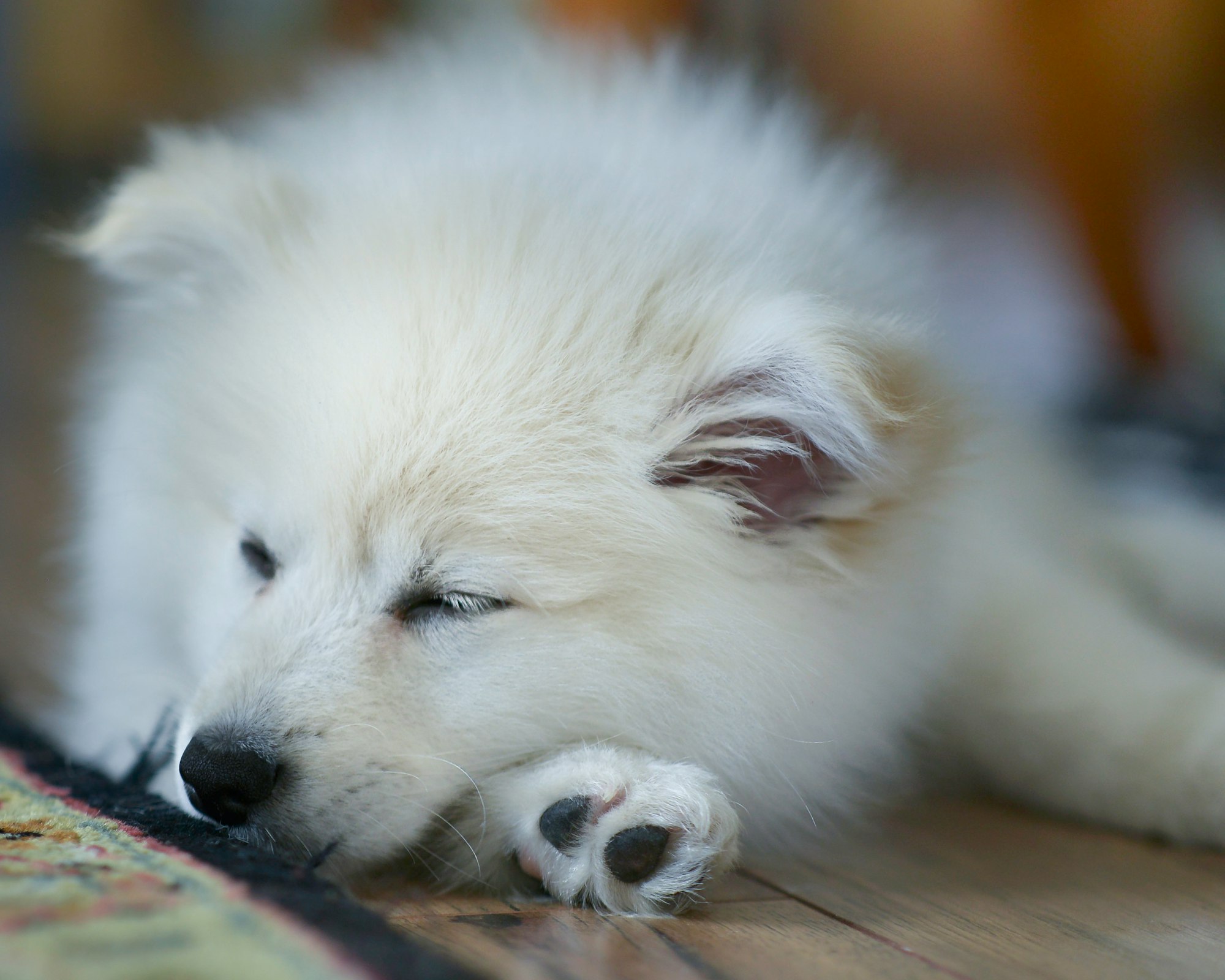Is your puppy driving you a little crazy? Wondering if they’ll ever mellow out? Don’t worry—puppies will get easier.
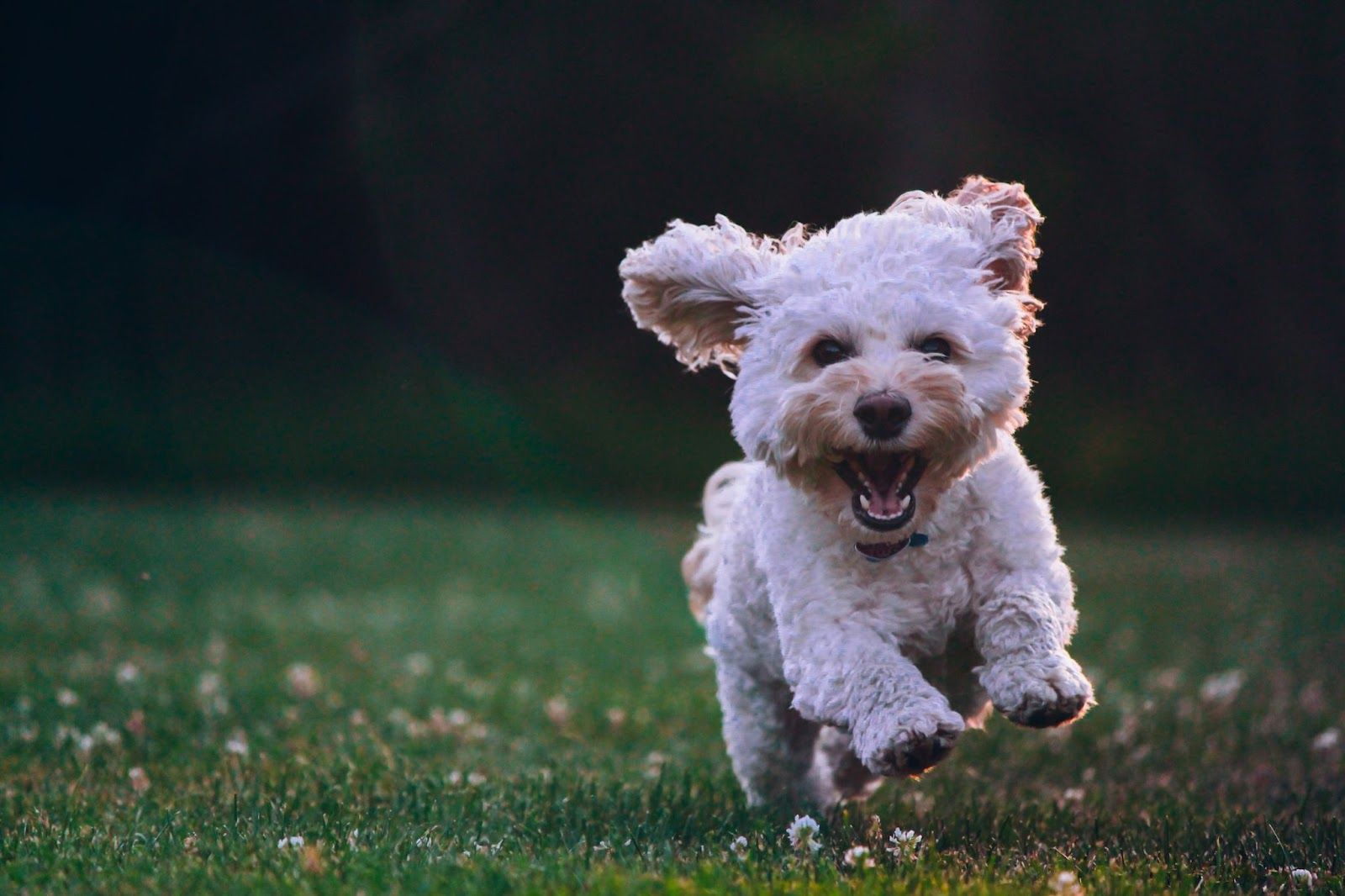
Will My Crazy Puppy Calm Down?
It’s so exciting picking out a new puppy, and bringing them home for the first time! They are the cutest thing you’ve ever seen. And you just know you’ll love them forever. But then… the craziness starts.
If you bought a puppy, and now they are a bit more than you can handle, you’re not alone. If you feel bad because you’re starting to regret it, don’t worry. You’re not alone. And you’re not a bad person. But this phase won’t last forever.
Having to deal with a hyper puppy can be exhausting and frustrating. But I promise you, you will get through it! The big questions are: When do puppies get easier? How do you calm down a hyper puppy? And do puppies become less hyper?
When Do Puppies Get Easier?
Puppies go through growing stages, just like humans. And like us, they go from helpless little babies, to crazy hyper kids with short attention spans. And eventually they mature, calm down, and learn to behave.
Birth-10 weeks old: Puppies are helpless at first, relying on their mother for everything. And then they begin to understand social norms by playing with their siblings.
10-16 weeks old: A puppy’s energy begins to sky-rocket. They have short attention spans, and they want to test their boundaries. On top of that, they will be teething and wanting to chew on everything!
4-6 months old: Your puppy will still have high energy, but they are able to learn things like potty-training, routines and schedule, appropriate behavior, etc. Just remember that it will take a lot of intentionality and consistency.
6-12 months old: You will begin to see your puppy maturing and calming down a little. But their energy will still be pretty high. They will need you to continue focusing on training.
1-2 years old: “Depending on your dog's breed, they will reach full adulthood after a year or two of life. Larger breeds tend to mature slower, so it may happen closer to the two-year mark.” And female dogs tend to mature faster than male dogs.
How Do You Calm Down a Hyper Puppy?
There are some simple tips and tricks that can help you calm down your puppy, and understand their craziness a little better.
Know Your Dog’s Breed
Let’s start by checking out your dog’s breed. Is it a purebred, or a mixed breed? And do you know the characteristics of their breed? The American Kennel Club is an organization all about dog breed information. You can actually look up your dog’s breed on their website, and they will tell you all of the specifics you should know about it.
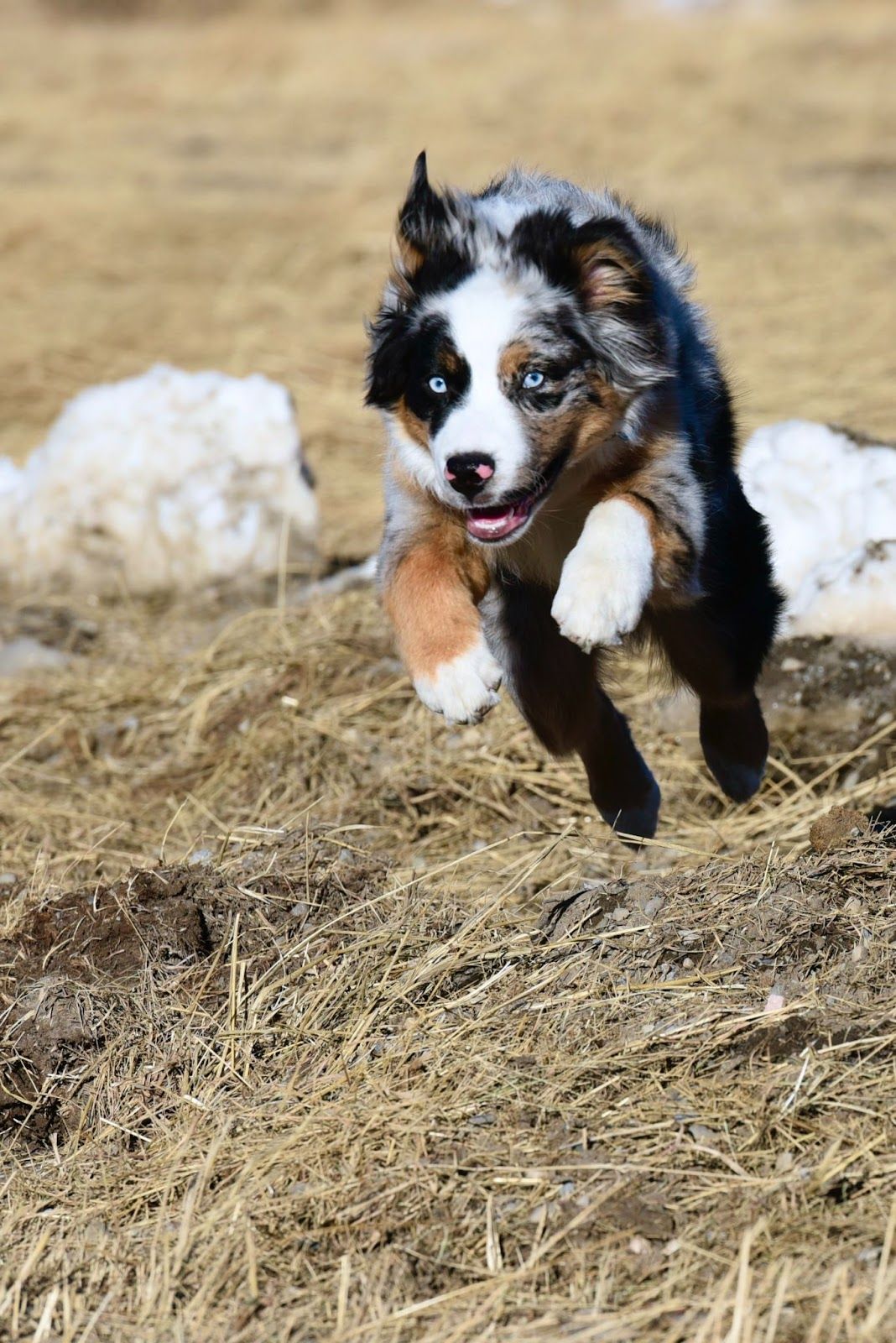
Some dog breeds are naturally more energetic than others, and will need a lot more exercise and mental stimulation—not only while they are puppies. Although they will calm down as they age, some breeds were bred to work or hunt all day long, so they need more than just a quick walk here and there.
Provide Plenty of Exercise
One of the best things I ever did for my Treeing Walker Coonhound was to fence-in our 4-acre lot. She’s a hunting dog breed, and needed way more exercise than I could give her on daily walks—especially as a puppy. Once we fenced-in the yard, she could run all day, hunting for critters in the yard as much as her little heart desired. And all of a sudden, she stopped tearing things up in the house, started listening better, and actually came inside to snuggle up on the couch.
I know not everyone has tons of land, but if you’re able to fence-in a backyard, you’ll be doing your dog so much good! And if you don’t have a yard—try taking your pup for multiple walks in a day. Yes, it takes time and energy from you. But you’ll be shocked to see what a difference it makes in your dog’s behavior.
And make sure to always use a collar, harness, and leash when taking a puppy outside. To be extra safe, you can use a Fi Smart Dog Collar to track your puppy’s GPS location, and even keep track of their daily exercise.
Time for Puppy Training
Once your puppy starts getting the appropriate amount of exercise needed, they will be able to calm down and focus more. So now it’s time for some training. You can find some great training videos on YouTube, from famous trainers like Cesar Millan, or from groups like AKC S.T.A.R. Puppy or the Canine Good Citizen program.
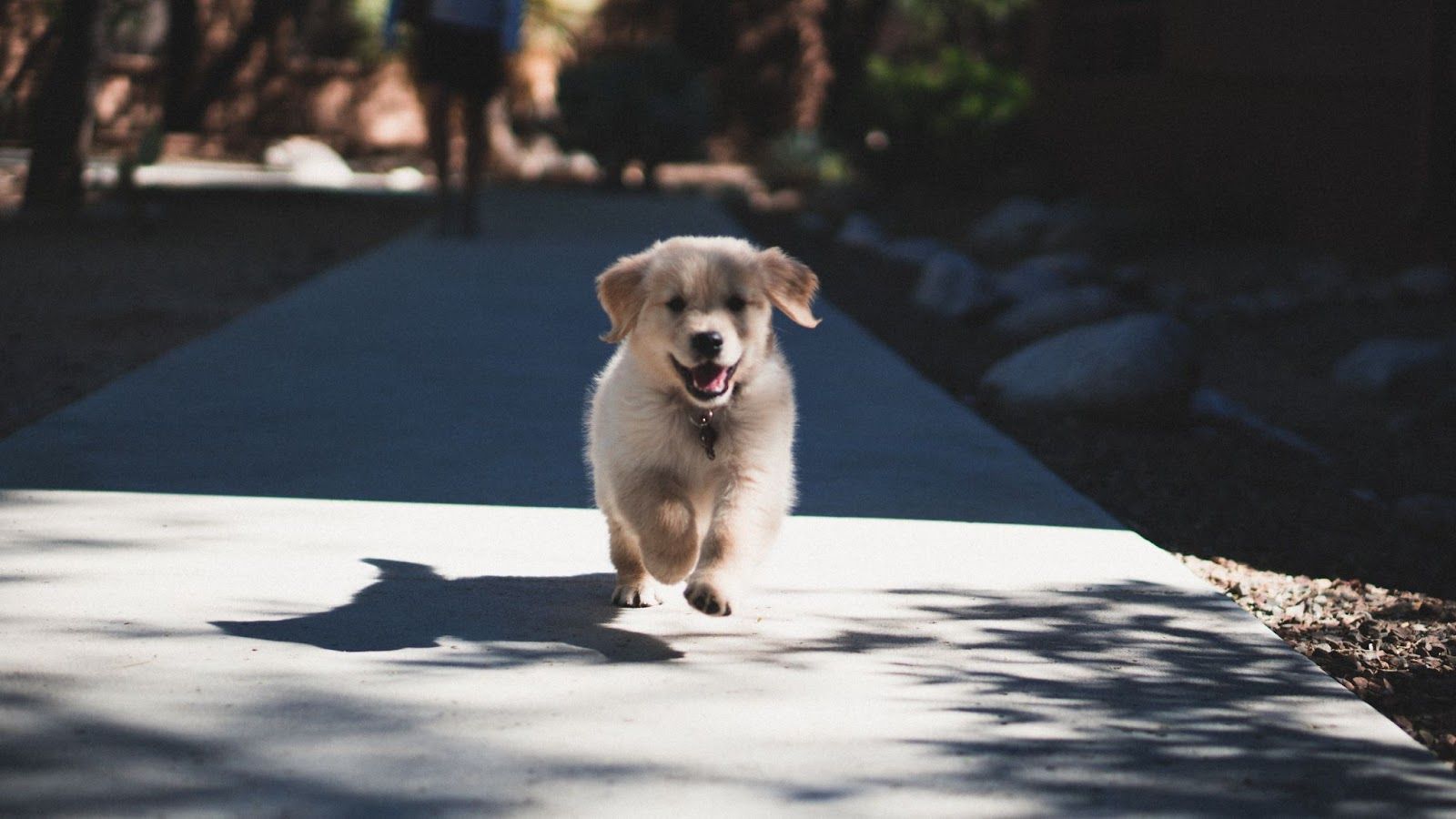
Give Your Puppy Mental Stimulation
A lot of dog breeds will benefit from the added exercise. But most dogs also do well with having some kind of job. Taking my hunting dog on walks helps, but letting her run around in a fenced-in yard to sniff, hunt, and dig helps her the most.
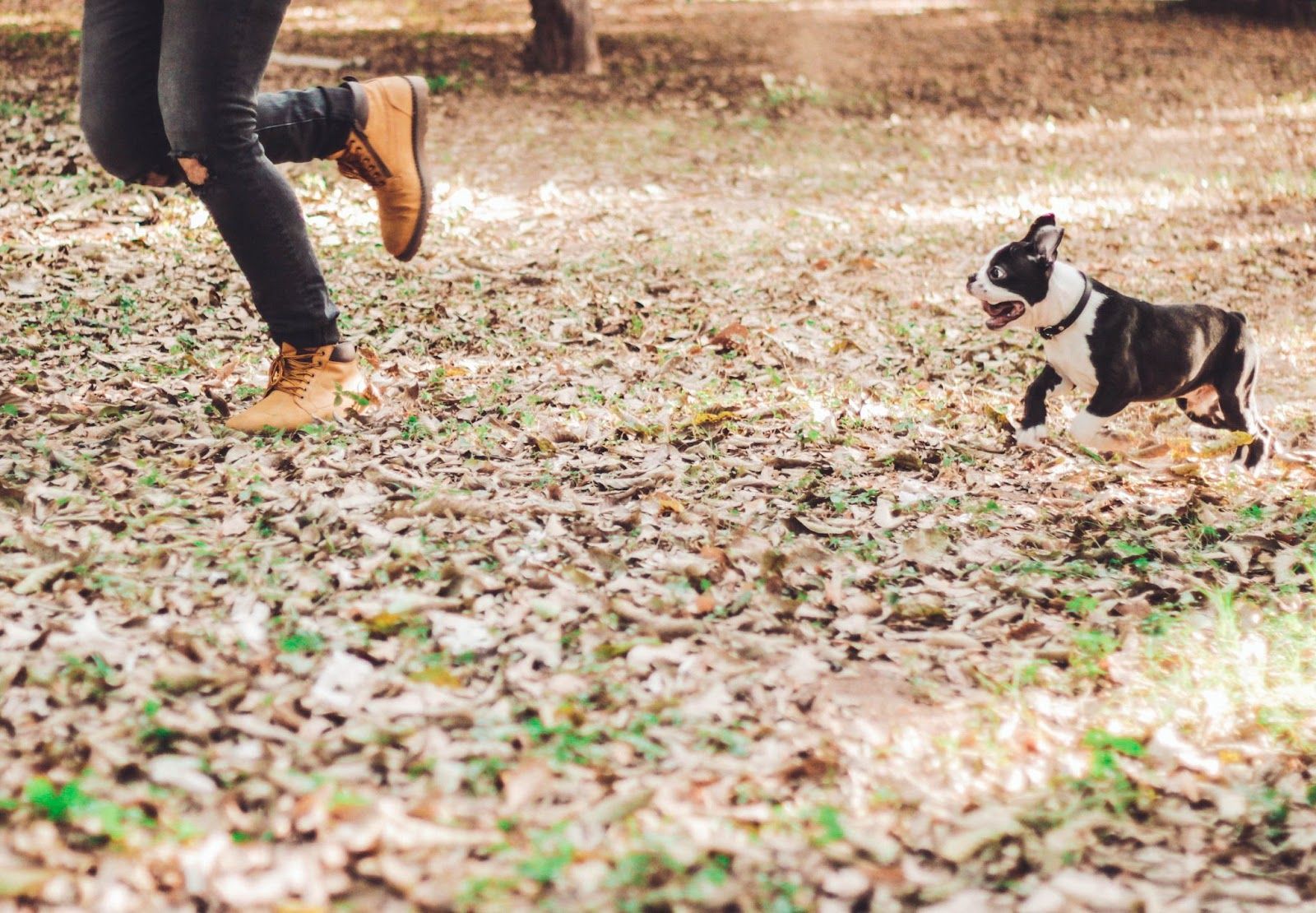
You can also try toys like KONGs or Dog Treat Puzzles to keep your pooch entertained. Or even try teaching your dog new games and activities that you can play together in the backyard. The American Kennel Club hosts competitions for dogs doing activities like obedience, agility, lure coursing, herding, and more! You can train your dog to compete, or just try teaching them some new activities for fun at home.
Always Check with Your Veterinarian
And just to be sure there aren’t any underlying issues with your puppy causing them to act up, make an appointment with your vet. “While most of the time, exercise, training, and activities are the issue, there are medical conditions that can cause hyperactivity.” So be sure to get your puppy a check-up, just in case.
Do Puppies Become Less Hyper?
Eventually, yes! I know it’s difficult right now. But if you remain patient, you give your puppy plenty of exercise, and you’re diligent with training, you’ll begin to see a difference. And before you know it, your puppy will grow up, mature, and begin to act like a calm, well-behaved adult dog.
For more articles about helpful pet parenting tips, breed mixes, and fun dog-friendly activities, check out the Blog at TryFi.com.
